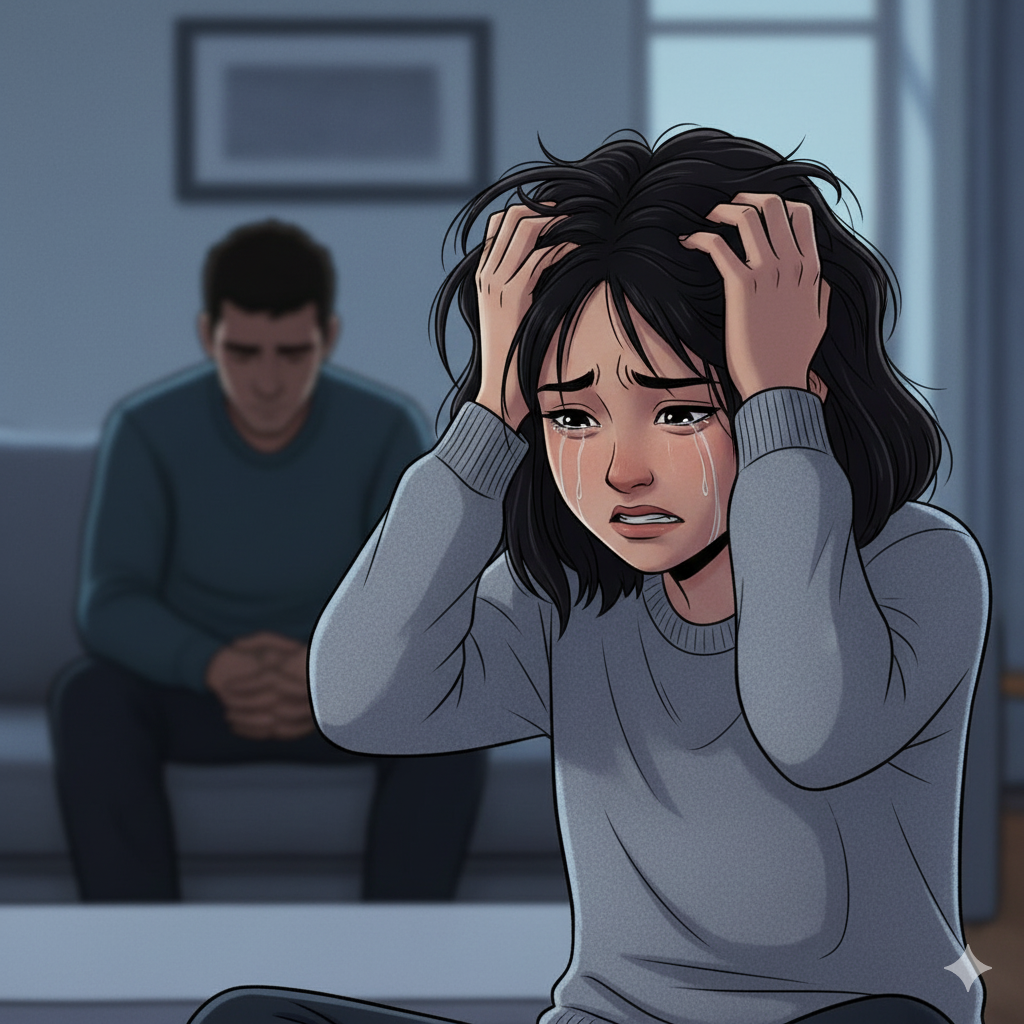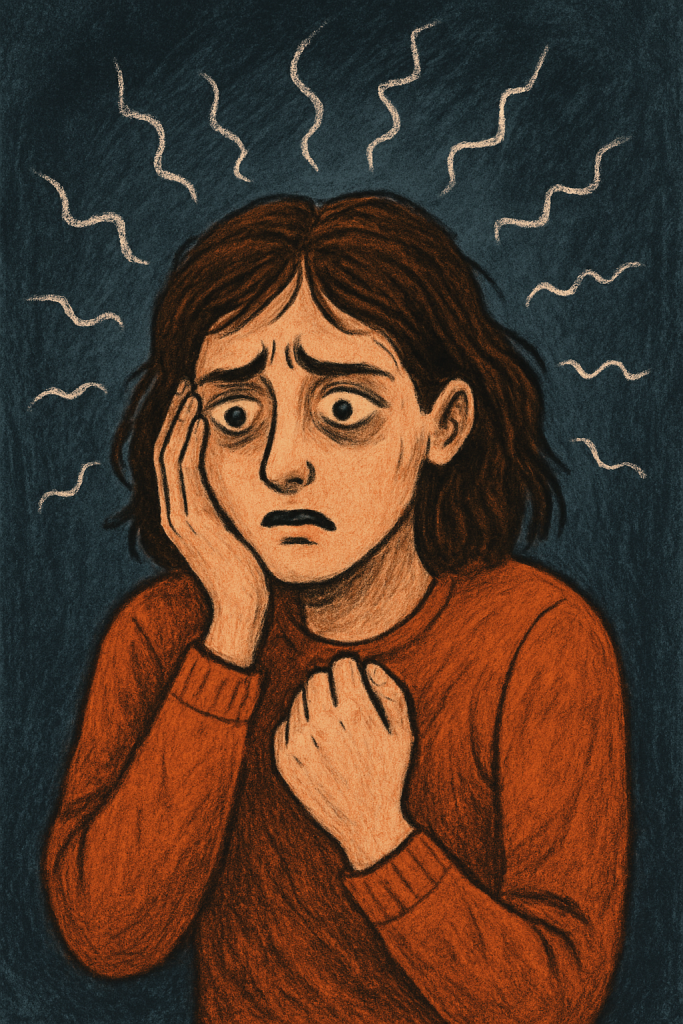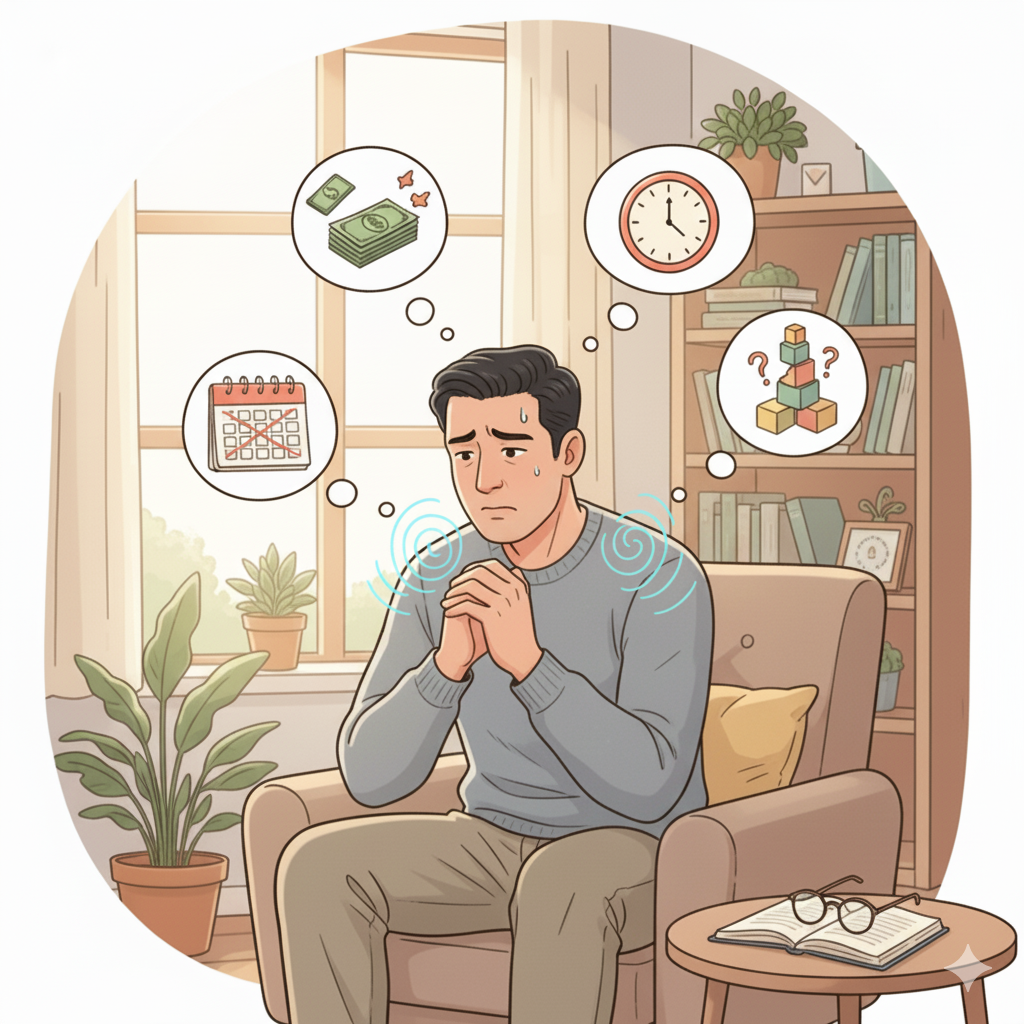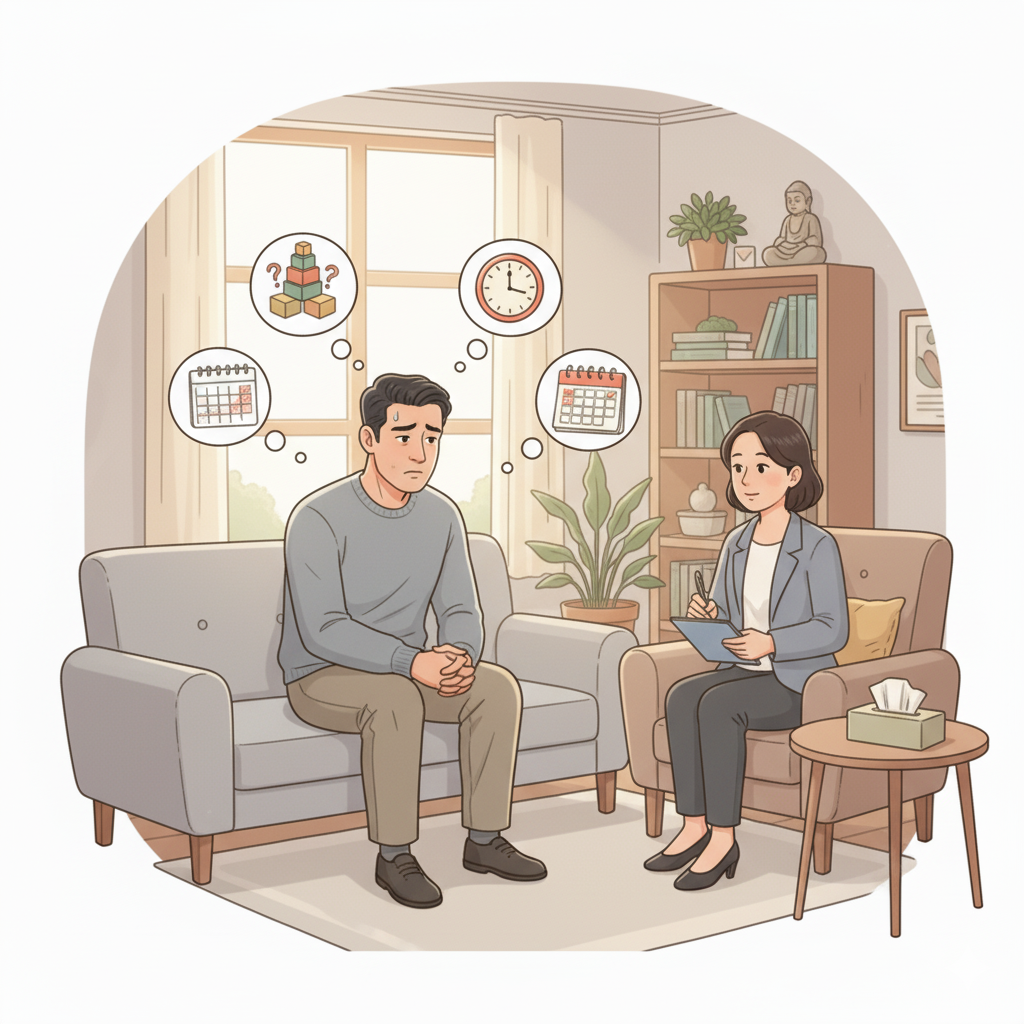Anxiety Therapy
Clinical anxiety is a persistent and often debilitating condition, distinct from the temporary fear or stress people experience in typical dangerous or stressful situations. It’s characterized by unfounded fears and excessive worry that significantly impact everyday life at work, at home, and in social settings. These intense fears can prevent participation in social activities and lead to academic or career difficulties.


Symptoms of Clinical Anxiety
Anxiety is broadly characterized by excessive worry, fear, and apprehension. While the specific symptoms can vary depending on the individual and the exact form of anxiety, common indicators generally include:
- Excessive Worrying: Individuals with anxiety often experience persistent and intrusive thoughts or concerns about various aspects of their life, such as work, relationships, health, or future events.
- Restlessness and Irritability: Anxiety frequently leads to feelings of restlessness, agitation, and irritability. You might find it challenging to relax throughout the day, feel “on edge,” or have a low tolerance for frustration.
- A Sense of Impending Doom: A pervasive and unfounded sense of danger, panic, or doom is often experienced on most days. These powerful feelings can make it challenging to relax or focus on everyday tasks and activities.
- Physical Symptoms: Anxiety can manifest physically as shortness of breath, rapid heartbeat, sweating, trembling, and dizziness. It’s also common to experience an upset stomach, headaches, or muscle tension. These symptoms can often mimic a panic attack and may be accompanied by that sense of impending doom.
- Sleep Disturbances: Anxiety frequently interferes with sleep, causing trouble falling asleep and staying asleep. It can also cause you to feel weak or restless, significantly disrupting sleep patterns.
- Difficulty Concentrating: Anxiety can impair concentration and focus, making it difficult to complete tasks or make decisions. You might feel easily distracted or experience persistent racing thoughts.
- Avoidance Behavior: To manage their anxiety, individuals often begin to avoid certain situations, places, or activities that trigger their worries or fear. Over time, this can lead to social isolation and significantly impact daily functioning.
Seeking Help
It’s crucial to note that anxiety symptoms can range from mild to severe, but even mild symptoms can significantly impact a person’s daily life. If you or someone you know is experiencing these symptoms, book a session with us and let us help you.
A Deeper Dive into Generalized Anxiety Disorder (GAD)
Generalized Anxiety Disorder (GAD) is a specific, chronic condition that demands attention.
GAD is characterized by persistent, excessive, and unrealistic worry about multiple areas of life—such as finances, health, work performance, relationships, or mundane daily responsibilities—for a period of six months or more. Unlike a momentary stressful reaction, the worry in GAD is pervasive and often feels uncontrollable, significantly interfering with daily functioning.

GAD is More Than Just “Being a Worrier”
Many people with GAD are mistakenly told they are “just overthinking” or “just worriers.” However, GAD is a distinct clinical condition that involves:
- Intrusive, Chronic Worry: The thoughts are not fleeting; they are a constant, low-level drone of anxiety that is difficult to stop or refocus. It’s like having an internal alarm that never turns off.
- Physical Manifestation: The body pays the price. GAD often presents with hallmark physical symptoms, including chronic muscle tension (especially in the neck and shoulders), persistent fatigue, frequent headaches, and significant sleep disturbance (trouble falling asleep or staying asleep).
- Impairment of Life Quality: The chronic feeling of being “on edge” (restlessness or irritability) drains mental resources, leading to poor concentration, difficulty making decisions, and avoidance of activities that could trigger more worry.
Why Professional Help Is Essential For GAD Recovery
You cannot simply wish or will your way out of Generalized Anxiety Disorder. GAD becomes a deeply ingrained habit of the mind and nervous system. It requires the specialized tools and structured environment that a professional counsellor or psychotherapist, like myself, can provide.

1. The Necessity of Accurate Diagnosis and Ruling Out Other Issues
The first critical step is an accurate diagnosis. GAD symptoms can overlap with other conditions, such as major depressive disorder, other specific anxiety disorders (like Panic Disorder), or even medical issues (thyroid problems, heart conditions). As a professional, I can provide a thorough clinical assessment to:
- Differentiate GAD from general life stress.
- Identify Comorbid Conditions (e.g., Depression), which are common with GAD, ensuring a comprehensive treatment plan addresses all underlying issues.
2. Implementation of Evidence-Based Treatments
GAD does not respond well to simple advice. It requires evidence-based psychotherapy, which is the cornerstone of effective treatment:
- Cognitive Behavioral Therapy (CBT): The gold standard for GAD. CBT teaches you to identify the specific, often distorted, thought patterns that fuel your worry. We work to challenge the necessity of “what if” scenarios and replace them with more balanced, realistic thinking, effectively dismantling the worry habit.
- Worry Management & Mindfulness: You will learn practical skills to tolerate uncertainty, schedule dedicated “worry time” (to contain the worry), and use mindfulness and relaxation techniques to lower physical arousal and interrupt the anxiety cycle in the moment.
3. Breaking the Cycle of Avoidance and Isolation
Chronic worry often leads to avoidance—avoiding commitments, social situations, or even making decisions, all in an effort to control the uncontrollable. This avoidance is a temporary fix that ultimately reinforces the anxiety, leading to isolation and a smaller life.
In therapy, I offer a non-judgmental, safe, and collaborative space to:
- Unpack and validate the distress of chronic worry.
- Gradually challenge the need to control every outcome.
- Develop emotional tolerance for the feeling of uncertainty, which is the core fear in GAD.
4. Preventing Long-Term Health Consequences
Untreated GAD is not benign. The constant state of hyperarousal from chronic worry can significantly impact long-term health, leading to:
- Increased risk for Major Depressive Disorder.
- Physical ailments such as Irritable Bowel Syndrome (IBS), chronic pain, and an increased risk for cardiovascular issues due to persistent high levels of stress hormones.

Seeking professional help is an act of prevention and self-care. It is the most effective way to regain control over your thoughts, soothe your nervous system, and return to a life where your worries no longer dictate your choices. If you recognize yourself or a loved one in these symptoms, please take the step to book an initial consultation.
